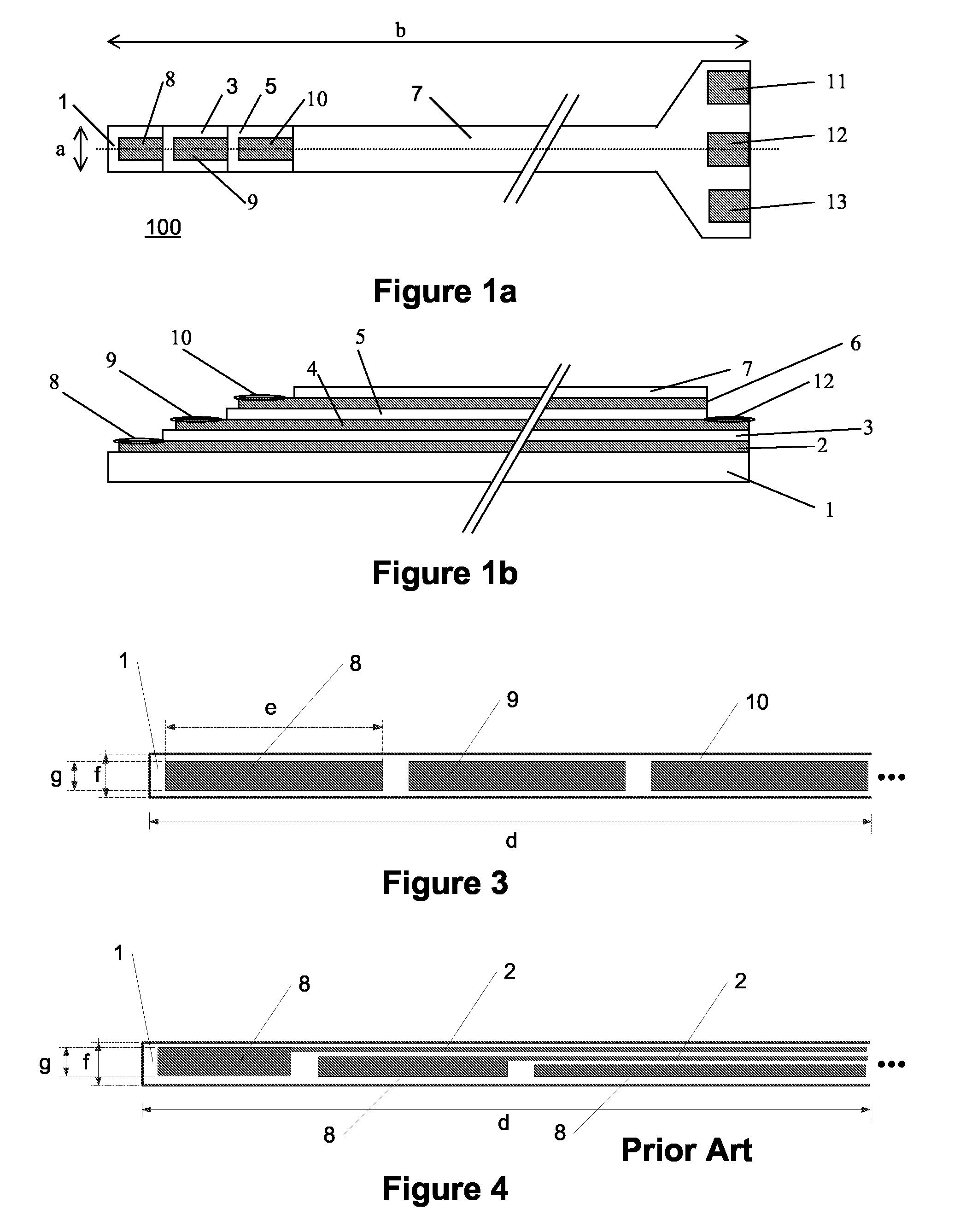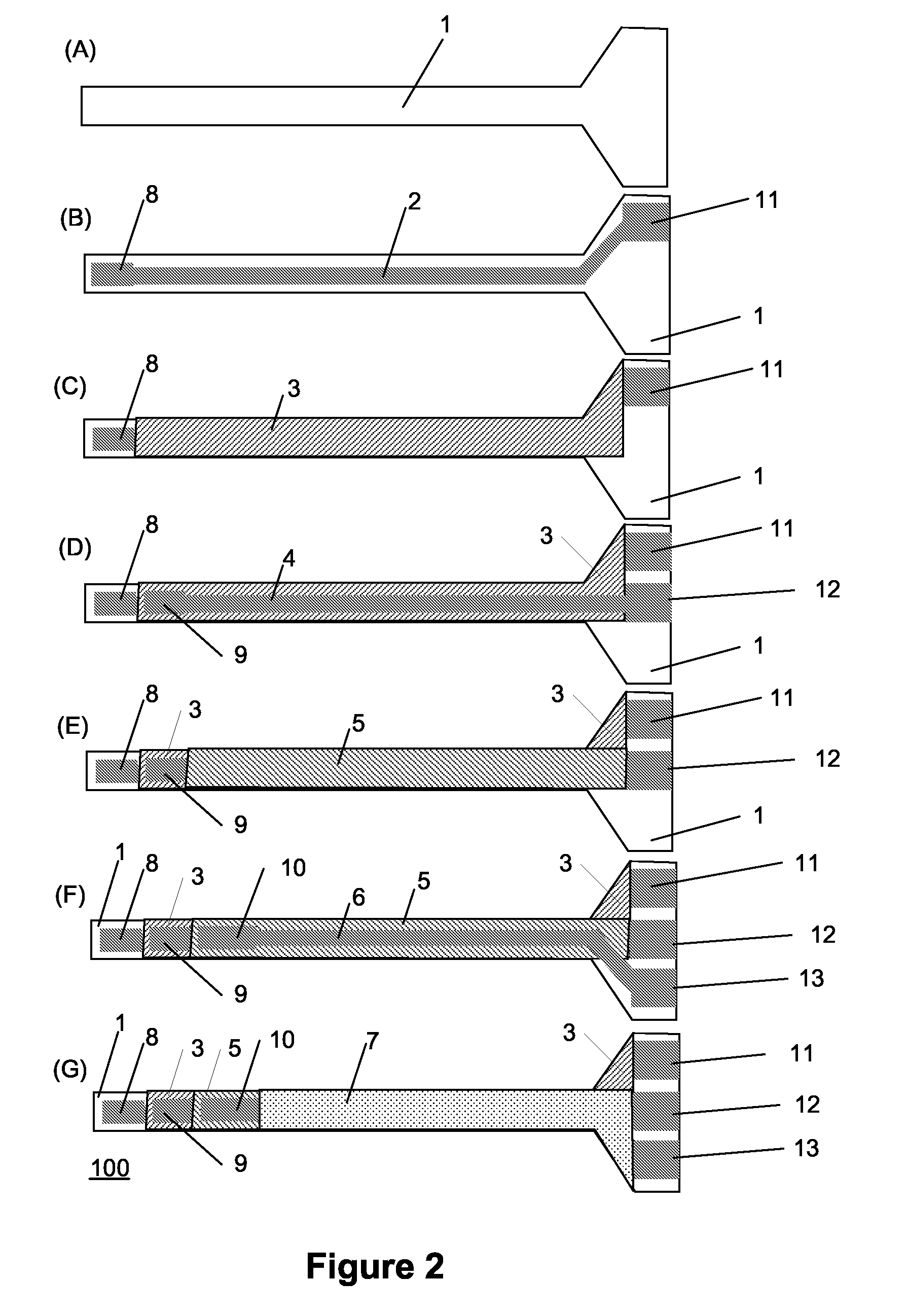Manufacturing Process For Producing Narrow Sensors
- Summary
- Abstract
- Description
- Claims
- Application Information
AI Technical Summary
Benefits of technology
Problems solved by technology
Method used
Image
Examples
Embodiment Construction
[0098]FIG. 1a schematically illustrates a top view of a (three-)electrode assembly / architecture according to one embodiment of the present invention. Shown is an electrode assembly (100) comprising a dielectric substrate (1), a first electrode surface (ES) (8) of a first conductive layer, a first dielectric layer (3), a second ES (9) of a second conductive layer, a second dielectric layer (5), a third ES (10) of a third conductive layer, a contact pad for electronics (CPE) (11) of the first conductive layer, a CPE (12) of the second conductive layer, a CPE (13) of the third conductive layer, and a third dielectric layer (7).
[0099]The first, second and third conductive layer is not shown specifically but is shown e.g. in FIGS. 1b and 2, as (2), (4) and (6), respectively.
[0100]A single electrode typically comprises a conductive layer comprising an ES, a CPE and a conductive track connecting the ES to the CPE. In the shown embodiment, electrical contact is preferably at the two ends of...
PUM
| Property | Measurement | Unit |
|---|---|---|
| Percent by mass | aaaaa | aaaaa |
| Percent by mass | aaaaa | aaaaa |
| Percent by mass | aaaaa | aaaaa |
Abstract
Description
Claims
Application Information
 Login to View More
Login to View More - Generate Ideas
- Intellectual Property
- Life Sciences
- Materials
- Tech Scout
- Unparalleled Data Quality
- Higher Quality Content
- 60% Fewer Hallucinations
Browse by: Latest US Patents, China's latest patents, Technical Efficacy Thesaurus, Application Domain, Technology Topic, Popular Technical Reports.
© 2025 PatSnap. All rights reserved.Legal|Privacy policy|Modern Slavery Act Transparency Statement|Sitemap|About US| Contact US: help@patsnap.com



